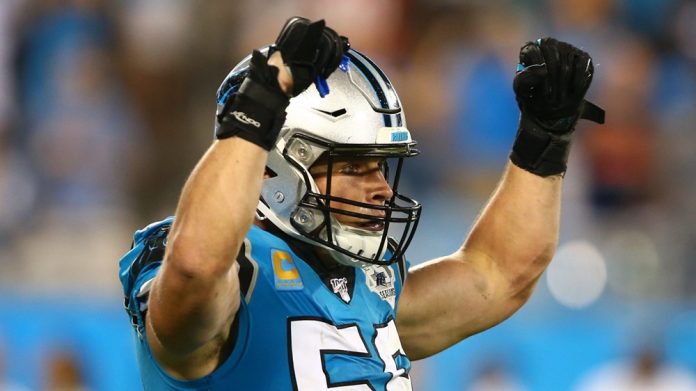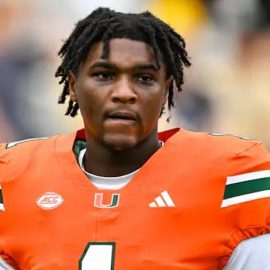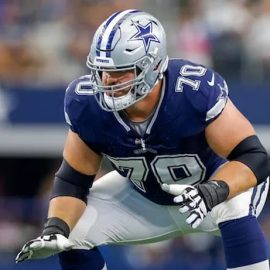Resident MLS expert Dan Leo takes – believe it or not – an optimistic look at the future of the MLS.
Saturday, March 29th marked the opening kick-off of the 13th MLS season (see Liviu’s review here), the United States’s and Canada’s top professional soccer (football) league.
As I had pointed in my previous pieces, the league isn’t considered a true “major” sports league in the US, if one only judges it from paid attendance and gross financial revenues (aka turnover).
Moreover, MLS has struggled mightily to attract a hard core soccer fan over its existence. If one were to make comparisons to the top world leagues, the overall quality of soccer just wasn’t there for the duration of its run. That in turn greatly affected the economic aspect of the sport.
Of course, it wouldn’t be American to give up on a dream. However few soccer fans may be in the US, those fans are loyal and vociferous. More importantly, they are growing bit by bit every year. Some are new converts, who have sampled what the league had to offer and stayed. Some are lurkers, who still prefer a Premiership or a Bundesliga but will watch MLS too because it is still soccer. Others still are brought in because of selected stars or because of having played soccer at an earlier age or because there was nothing else on TV.
And growth is good.
But how has MLS gone from there to here?
To say the least, it’s been a tumultuous road.
At first, the seeming attraction was to the US based soccer fans, who showed up in droves for the World Cup games that were held across North America in 1994.
But something went wrong. In colloquial terms, the MLS soccer sucked. Players recruited from the various semi-pro leagues and signed from the US colleges diluted a few quality internationals that made MLS their home. The initial appeal of home grown soccer began to wane and the disappointed crowds went home, rarely to return.
The 1998 World Cup was supposed to provide a moderate boost in prestige to the American soccer but that was a forlorn hope as well, as the US squad under Steve Sampson failed to even earn a point in France’98.
The league’s attendance continued to be iffy. The exact numbers of paying customers are unknown because the league was more concerned with the public perception of the sport rather than with the accounting accuracy. Suffice it to say, the league had continued to trudge along while losing untold millions for its owners/investors. In 2001, two its franchises with owners of moderate wealth decided to fold and MLS was left with ten teams. Other owners were likewise deserting the seemingly sinking ship.
What saved the league during those years were largely Phil Anschutz, (personal wealth $6.5 Billion, according to Forbes, 2006) who ended up owning and – purportedly independently – managing via his entertainment company AEG, the LA Galaxy, the New York Metrostars, the Chicago Fire, the DC United, Colorado Rapids and the San Jose Earthquakes and the late Lamar Hunt (personal wealth likewise in the billions), who owned three other teams Columbus Crew, Dallas Burn (now FC Dallas) and Kansas City Wizards. Another billionaire Robert Kraft owned the last franchise, the New England Patriots.
The MLS business model was then obviously a tremendous miscalculation and something else needed to be done.
The financial solution was almost incidental.
In 1999, the cavernous Ohio Stadium in Columbus, Ohio with its 102,000 seating capacity was undergoing renovations and the Columbus Crew was temporarily – or so was thought – left without a home. Lamar Hunt, never filled with trepidations of any kind, decided that the only prudent decision was to build an own stadium. And thus, with about $30M of own funds, the Columbus Crew stadium was erected.
The much smaller 22,000 seat stadium had several advantages over the giant Horseshoe – there was no rent to pay, there was no schedule to conflict with, there were no American football lines on the pitch, the playing surface could have been made of natural grass, the concessions, the merchandising and the parking revenues all went to the club and, since soccer didn’t draw huge crowds anyway, the limited capacity made the crowds appear cozy rather than isolated.
That fact didn’t go unnoticed by the league’s office. Quick analysis was made and a logical conclusion was reached – if every team had what was euphemistically known as a Soccer Specific Stadium (SSS), then even with limited crowds, each team could actually turn a small profit or, at the very worst, come close to breaking even.
That in turn led the league’s offices to pitch its teams as investment projects to the potential ownership groups – give us a soccer specific stadium and we’ll give you a team.
All that remained was for these ownership groups to use the enticement of the sport as a motivation for the local municipality to provide either the stadium or, at the very least, the needed infrastructure for its construction.
In this endeavor, the league was not acting out of order. Unlike most European nations, the US sports team owners never hesitated to dip into public coffers for a free-be. The negotiations were simple as a rule – a team owner approach the local mayor or board of supervisors and made a simple proposal, “Find us a stadium or we’re gone”.
The success of such tactics depended on each city. The Oakland/Los Angeles/Oakland Raiders of the NFL managed to receive some money from various cities but never a fully funded stadium. Other teams (Baltimore-cum-Indianapolis Colts, Boston-cum-Milwaukee-cum-Atlanta Braves, Chicago-cum-St. Louis-cum-Arizona Cardinals, Cleveland Browns-cum-Baltimore Ravens and a bunch of NBA teams) called their locals’ bluff and, when rebuffed, loaded up their trucks and moved to another city.
And, since each of those teams had a lot of supporters of the voting age, mayors and other officials did their best to placate the unhappy sports minority.
The taxpayer money were spent left and right and one stadium went up right after another.
So when the MLS bigwigs conceived that “free stadium” idea, they were following a totally beaten path.
The only complication was the relative lack of popularity of soccer visavis the other sports. American football teams easily sell-out their arenas. Baseball teams may not sell out often but, with their 162 game schedule, a decent franchise exceeds 2,000,000 paying fans in seasonal attendance. That gave those leagues a strong financial and political clout.
By comparison, MLS was a red-headed stepchild. Its paying figured must have hovered around the 10,000 mark on average and many of its early matches were frequented by very small 6,000-8,000 crowds. Soccer was essentially a sport that no one paid attention to besides the diehard fanatics.
What MLS did have however was a few very powerful owners. It may have taken a few years but, in 2003, a Home Depot Center was built in the greater Los Angeles area to house the LA Galaxy and serve as a host for the winter based US national team training camp and matches. Then the Pizza Hut Park in suburban Dallas. Then the Toyota Park near Chicago. The the Dick’s Sporting Goods Park outside of Denver. Then the BMO Field for the expansion Toronto FC. And two more private/public stadiums, in Salt Lake and Utah, are underway.
The above improved the financial outlook of the league and brought in new groups of owners, as the old stalwarts AEG and HSG began to divest themselves of teams that no longer needed their support.
As the new MLS year begins, AEG and the Hunt Group only own two franchises each (LA and Houston and Columbus and Dallas respectively).
Along with new stadiums and new ownership groups came a lot of new money – the Red Bull energy drink maker from Austria, the Mexican based entrepreneur and the CD Chivas de Guadalajara and Saprissa owner Jose Vergara, a Colorado based billionaire and a part-Arsenal FC owner Stan Kroenke, et al.
New money brought in new players.
New players brought in new publicity.
New publicity brought in a real TV contract.
Which in turn helped bring more players into an MLS fold.
2008 may be a lucky thirteen after all.
It worked for Gerd Müller, you know.
Add Sportslens to your Google News Feed!






